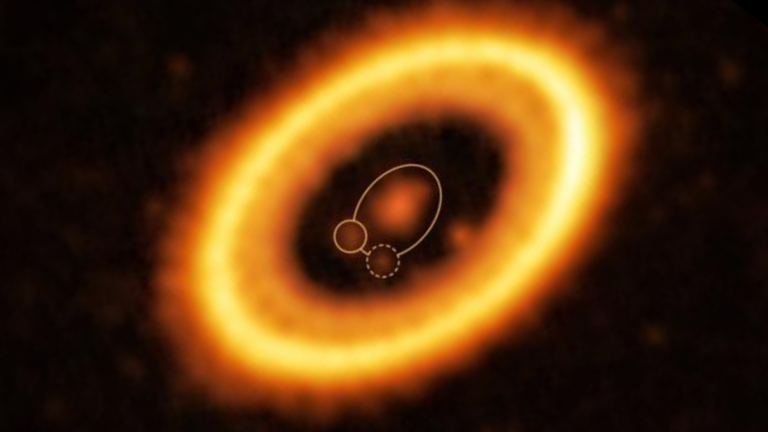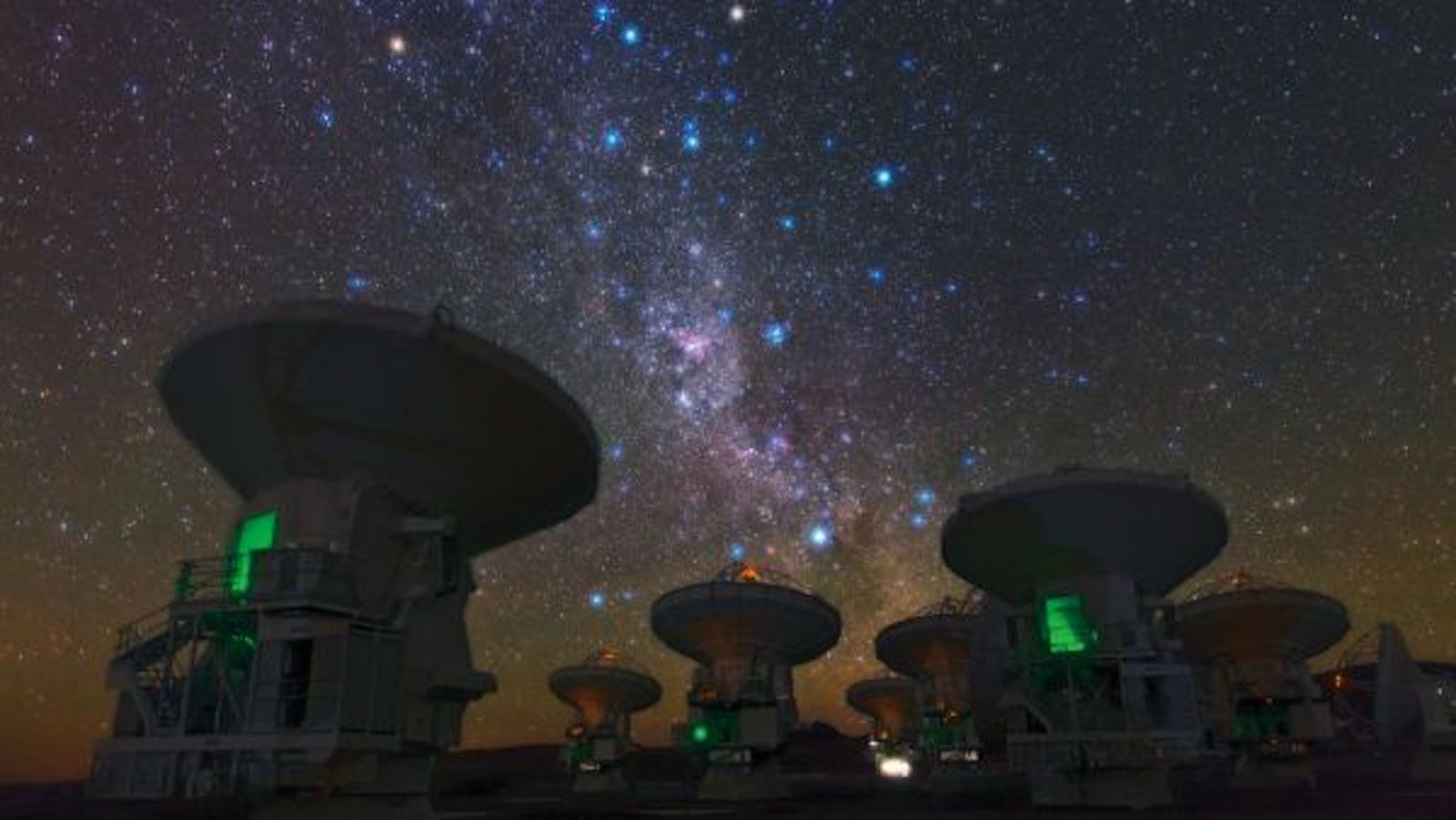
[ad_1]
Astronomers have discovered the first evidence of two planetary siblings sharing the same orbit around a star.
The discovery of a possible co-orbital “Trojan planet” is represented by the detection of a cloud of dust sharing the orbit of the distant giant exoplanet PDS 70b, located around 400 light-years from Earth.
This clump of matter with twice the mass of Earth’s moon could eventually condense into a planet, resulting in two worlds sharing the same orbit around a star. Alternatively, the cloud could be debris from what was once a planet, meaning this was a Trojan pairing in orbit around the young star PDS 70 in the past, researchers said.
Trojan planets, worlds sharing the same orbit around the same star, have been theorized for at least two decades, but this is the first evidence that has ever been found to favor this concept. The discovery is an exciting one, as it could give hints about how planetary systems form.
“Co-orbital planets are ‘fossils’ of the planetary formation processes at present; they are like unicorns, in the sense that they have never been found,” study lead author Olga Balsalobre-Ruza, a student at the Centre for Astrobiology in Space, told Space.com via email. “This is the first time that we have found evidence of accumulation of dust of up to two times the mass of our moon in the correct region and inside the orbit where a known young planet resides.”
Related: The strangest alien planets we’ve seen so far
Trojan hunting in a young planetary system
It is thought that Trojan planets form when dust clouds are trapped in regions at which the combined gravitational pull of a host star and a planet can hold material stable — so-called Lagrangian zones. Space scientists commonly use Lagrangian points of gravitational stability near Earth to “park” instruments like the James Webb Space Telescope.
The team detected this potential Trojan in the form of a dust cloud following a young planet using the Atacama Large Millimeter/submillimeter Array (ALMA), a network of radio telescopes in Chile. They were tipped off that it is “smoking gun” evidence of a Trojan planet because it sits inside the orbit of the planet PDS 70b at Lagrangian region L5, where Trojans are expected to form, Balsalobre-Ruza explained.
“According to our formation models, Trojan planets could be very common: As soon as a planet is formed, the pristine material in the surroundings starts to get trapped in the equilibrium points within the planetary orbits,” she said. “This means that the smaller of the two planets is an intruder in the orbit of the larger one, trapped in an equilibrium region where the gravitational forces of the larger planet and the star compensate the motion of the minor planet.”
She and her team searched the PDS 70 system, which was previously known to host two Jupiter-sized worlds (PDS 70b and PDS 70c), because it is a young system in the early stages of planet formation. PDS 70 is so young that its star is still surrounded by a disk of planet-forming material, called a protoplanetary disk. This means it can be used to check this Trojan formation model.
Related: Amazing photos from the ALMA radio telescope
Trojans inside and outside the solar system
While Trojan planets may have evaded astronomers until this tentative detection, scientists are familiar with Trojans in other forms.
In our solar system, Trojans take the form of rocky bodies that share an orbit with a nearby planet. The most famous example of this is the Trojan asteroids, a family of over 12,000 rocky bodies accompanying Jupiter on its orbital journey around the sun.
This inspired scientists to theorize about Trojans in other planetary systems orbiting other stars — extrasolar Trojans or “exotrojans” — especially in the form of planets.
Trojan planets wouldn’t be particularly exotic, aside from their orbit-sharing properties, Balsalobre-Ruza explained. So, if they are the right distance from their host star, they could have the right conditions for life, just like Earth.
That means there could be Trojan planets following the same orbital path, both of which are inhabited by their own unique lifeforms that have taken separate evolutionary paths.
Trojan planets sharing the same orbit could have another similarity with our world, Balsalobre-Ruza pointed out.
“Trojan planets can intervene in the formation of large moons,” she added. “One of the most accepted theories of the formation of our own moon is the impact of a planet that shared the same orbit as the Earth at the earliest stages of its formation.”
While it’s possible Earth once had its own Trojan sibling, there are already tentative hints as to why the 4.6 billion-year-old solar system may not have any Trojan planets of its own today..
“We have already started searching for exotrojans in more mature systems with no luck so far,” Balsalobre-Ruza continued. “This could mean that, even if they could form, they might not be stable during long timescales.”

While the detection is a suggestive one for Trojan planet theories, more work is needed to firm it up.
“This is a tentative detection, and the next obvious step is the confirmation of the existence of that exotrojan,” Balsalobre-Ruza said. “By 2026, we will be able to check if both the planet and the possible exotrojan move in the same orbit by observing the system with ALMA again. “
Upgrades to ALMA over the next decade should allow the telescope, located in the Atacama region of northern Chile, to spot dust and faint objects much more rapidly than it can now. This could be the key to advancing our understanding of the formation and evolution of young co-orbital planets.
“Finding dust in the region where Trojans are expected to form is a big support to the theory of their formation. Confirming it is actually a Trojan by finding that it moves with the planet PDS 70b enhances the credibility for the existence of these exotic worlds, thus motivating new searches,” Balsalobre-Ruza concluded. “The hunt for exotrojans has just started.”
The team’s research was published today (July 19) in the journal Astronomy & Astrophysics.
[ad_2]